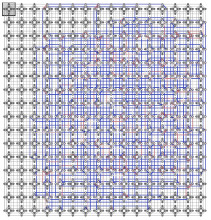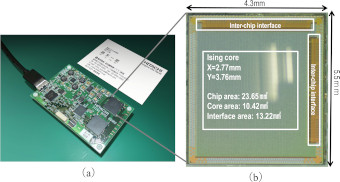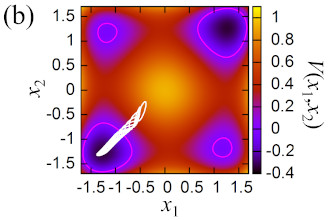Volume 63, Issue 3
Special Feature : A New Kind of Advanced Computing : Evolution of Ising Machine
Displaying 1-14 of 14 articles from this issue
- |<
- <
- 1
- >
- >|
Preface
-
Article type: Preface
2020Volume 63Issue 3 Pages 95
Published: March 10, 2020
Released on J-STAGE: March 10, 2020
Download PDF (307K)
Special Feature : A New Kind of Advanced Computing : Evolution of Ising Machine
-
Article type: Overview
2020Volume 63Issue 3 Pages 96-103
Published: March 10, 2020
Released on J-STAGE: March 10, 2020
Download PDF (1571K) -
Article type: Overview
2020Volume 63Issue 3 Pages 104-111
Published: March 10, 2020
Released on J-STAGE: March 10, 2020
Download PDF (3306K) -
Article type: Current Topics
2020Volume 63Issue 3 Pages 112-116
Published: March 10, 2020
Released on J-STAGE: March 10, 2020
Download PDF (1081K) -
 Article type: Current Topics
Article type: Current Topics
2020Volume 63Issue 3 Pages 117-122
Published: March 10, 2020
Released on J-STAGE: March 10, 2020
Download PDF (1526K) -
Article type: Current Topics
2020Volume 63Issue 3 Pages 123-128
Published: March 10, 2020
Released on J-STAGE: March 10, 2020
Download PDF (3017K) -
Article type: Current Topics
2020Volume 63Issue 3 Pages 129-133
Published: March 10, 2020
Released on J-STAGE: March 10, 2020
Download PDF (3396K)
Regular article
-
Article type: Regular article
2020Volume 63Issue 3 Pages 134-138
Published: March 10, 2020
Released on J-STAGE: March 10, 2020
Download PDF (1742K)
Planning Series
Olympic and Paralympic
-
Article type: Planning Series
2020Volume 63Issue 3 Pages 139-141
Published: March 10, 2020
Released on J-STAGE: March 10, 2020
Download PDF (3164K)
Report
Conference Reports
-
Article type: Report
2020Volume 63Issue 3 Pages 142
Published: March 10, 2020
Released on J-STAGE: March 10, 2020
Download PDF (462K) -
Article type: Report
2020Volume 63Issue 3 Pages 143-144
Published: March 10, 2020
Released on J-STAGE: March 10, 2020
Download PDF (960K) -
Article type: Report
2020Volume 63Issue 3 Pages 145
Published: March 10, 2020
Released on J-STAGE: March 10, 2020
Download PDF (1283K)
Science Café
Research Abroad
-
Article type: Science Café
2020Volume 63Issue 3 Pages 146-147
Published: March 10, 2020
Released on J-STAGE: March 10, 2020
Download PDF (1543K)
News & Trends
-
Article type: News & Trends
2020Volume 63Issue 3 Pages 148
Published: March 10, 2020
Released on J-STAGE: March 10, 2020
Download PDF (340K)
- |<
- <
- 1
- >
- >|







